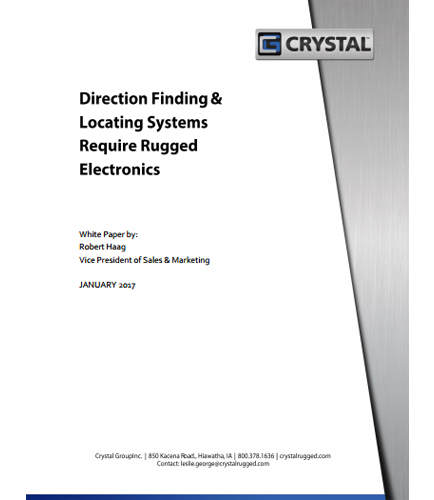
PROCESSING. PLEASE WAIT...

White Paper: Crystal Group
Direction finding and locating systems are typically used in aerospace and defense, law enforcement, homeland security, public safety and other fields to detect and locate electronic signals.
Why ruggedized electronics are critical components of Direction Finding and Locating Systems?
This whitepaper highlights the modern rugged computer and network technology for deployment in hostile environments of extreme temperature and vehicle-caused shock, including an explanation of working and benefits of signal detection technology.
Armed forces installation
Rugged, robust hardware required
Rugged networking needs
The comprehensive, ground-based system attributes transportable shelters, antennas, rugged electronic gear, and processing software that can withstand years of use in extreme conditions.

By: Quantum
Hyper Converged Infrastructures (HCI) brings non-disruptive scaling, reduced complexity, and other benefits, but it requires a stronger data-protection strategy because hyper convergence brings new vulnerabilities. Hyper converged systems are a perfect target-one unique system to encrypt with a built-in replication to spread the malware. For smaller companies with relatively few virtual machines (VMs), a Hyper Converged Infrastructure solution may be the only architecture their data center needs, providing the ultimate simplification. Some critical applications can also be hosted on an HCI, but designing an HCI to meet performance service-level agreements (SLAs) might be challenging compared to designing a more traditional infrastructure. This whitepaper provides insights on data protection basics and its role in Hyper Converged Infrastructure projects. It also explains about how designing an HCI to meet performance service-level agreements (SLAs) might be challenging. From virtualized to hyper converged environments- Understand data protection basics and implications in these environments Hyper convergence- New Threats: Understand Data Protection and the Implications in an HCI How to choose the right approach for your hyper converged environments Array-Based Snapshots Are Not Backups
By: Crystal Group
All of the power supplies tested passed the thermal, stress test, and low/high voltage operation criteria at 440 Hz. However, there is one very important parameter that must be considered in deeming a power supply appropriate for operation in a 400 Hz environment. This parameter is known as power factor, commonly abbreviated as PF. The higher the PF (desired), the lower the reactance and the more current is in phase with the voltage. The lower the PF (undesired), the higher the reactance and the more out of phase is the current with respect to the voltage. The purposes of this whitepaper are: to provide confidence in claiming compliant operation outside the stated vendor specifications, namely at 400 Hz, suitable for use with airborne power buses to provide compliance with margin and eliminate borderline passing scenarios to provide insights on the supplies that are 400 Hz compatible


 2025 All Rights Reserved | by: www.ciowhitepapersreview.com
2025 All Rights Reserved | by: www.ciowhitepapersreview.com